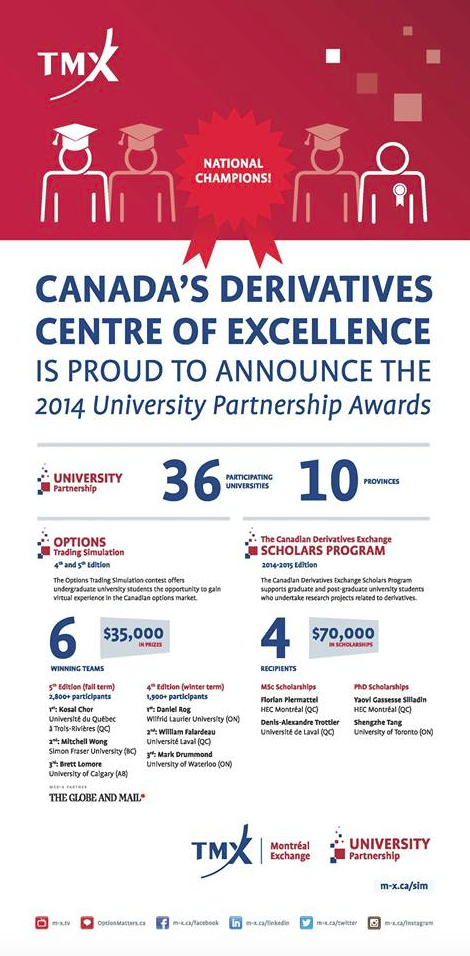 Knowing that I had no advantage over any other participant in terms of financial knowledge or mentorship, I initially had no intention of achieving a notable rank in the TMX Options Simulation Competition. I chose to participate mostly for the learning experience, but also partially for the experience of losing money in a simulation as a means of deterring myself from trading securities in real life. That mentality quickly changed as my trading efforts were seeing greater results than my original expectations.
Knowing that I had no advantage over any other participant in terms of financial knowledge or mentorship, I initially had no intention of achieving a notable rank in the TMX Options Simulation Competition. I chose to participate mostly for the learning experience, but also partially for the experience of losing money in a simulation as a means of deterring myself from trading securities in real life. That mentality quickly changed as my trading efforts were seeing greater results than my original expectations.
Upon the realization that I had a shot at performing the best within BC, I put a great amount of time and effort into learning about the large variety of options trading strategies. I also found myself putting a lot of time into updating myself on the situations that certain corporations and market sectors were experiencing. The most difficult step was determining how my personal trading strategies should be adjusted in accordance to the changing situations, and determining the extent to which hedging would be necessary.
To my surprise, shortly after the halfway mark of the competition, I wound up on TMX’s chart of “best performing team per province.” All of the colourful sticky notes I had plastered over the desk and walls of my room for this competition seemed to be doing some good. But I felt that I had reached a point of stagnation in terms of what the final results would be if I simply continued to make my trades as safely as they had been up to that point, so I assumed an “all or nothing” mentality, and started playing by the name I had used to represent my team: Risk Rider.
The next couple of weeks of the competition were the most nerve-racking (yet oddly amusing) for me. My trading strategies were nothing short of having nearly maximal risk, as I was trading some of the most volatile stock options, and if price movements were unfavourable, I’d essentially be wiped out of the competition. Luckily, my rapidly expanding sea of sticky notes (and a live electronic spreadsheet) guided me in the correct direction.
As the competition’s final week initiated, I was really happy to see myself as being one of the top three contenders on the nation-wide rankings, but was not confident in my ability to continue trading successfully using such poor risk management strategies. I returned to using the safer trading strategies that I had used earlier on in the competition, and managed to achieve second place in the final ranking, which I couldn’t be more satisfied with.
Looking back, I honestly believe I put more effort into this competition than I will ever put into a four-credit business course. I’m definitely not going to forget pushing myself to wake up at 6:30am every weekday morning to make a pot of coffee, read business news, make random spreadsheets and graphs that I couldn’t even comprehend, whilst sobbing at the fact that I could’ve made better trades the previous day.
Regardless, I learned a lot that I otherwise wouldn’t have without the existence of this competition, my respect for stockbrokers has skyrocketed, and I am extremely happy to have received this opportunity in the first place. However, I learned that finance-related work and trading is not the life for me. People who do this for a living are one of a kind.